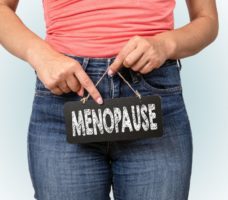Think of the word ‘menopause’ and you may think of a woman in her late 40s or 50s experiencing hot flushes or night sweats. But, what if we told you that it’s not only women who experience a change in hormone levels as they age? Well, while men don’t experience a significant shift – they experience a shift, all the same. This change in hormone levels is sometimes referred to as the ‘male menopause’.
Remember, the hormone changes in women during menopause are considerable. ‘Male menopause’ is a term that essentially refers to the gradual decline of testosterone levels in men as they age. This shift is also referred to as late-onset hypogonadism or age-related low testosterone [1].
Some of the symptoms associated with this change in testosterone levels include:
What are the symptoms of male menopause?
It’s estimated that after the age of 40, a man’s testosterone levels begin to decrease by around 1% per year [2]. This change in hormone levels is unlikely to cause any major symptoms or signs – in contrast to female menopause.
If symptoms or signs do occur, not including symptoms mentioned above, they may include:
What causes hot flushes in a man?
Contrary to popular belief – hot flushes aren’t just an issue women experience, in fact – men can experience hot flushes too, and they can be just as bothersome.
For both men and women, hot flushes are associated with a shift in hormone levels. With that said, because testosterone declines at such a small percentage, men can usually maintain healthy testosterone levels – helping to prevent hot flushes. According to Harvard Health, men who undergo androgen deprivation therapy for prostate cancer are more likely to experience hot flushes; around 70-80% of these men to be exact! [3]
Experienced hot flushes? Then you probably don’t need a reminder of the feelings that come along with them. If not, some of the common symptoms tend to include:
Can you treat male menopause?
Although a number of men may not even realize they are experiencing age-related low testosterone, in others – the shift, and the symptoms that come along with it, can be unfavorable.
Testosterone replacement therapy is sometimes considered by healthcare professionals in order to help reverse any troublesome symptoms and side effects of hypogonadism [4]. There are a number of forms of testosterone therapy, these include:
Don’t forget, testosterone therapy may not be the right option for everyone and it’s important to discuss your options with your healthcare provider.
One of the best ways to know more about your testosterone levels is through a test. This can be done with your doctor or from home with an at-home lab test.
LetsGetChecked’s Testosterone Test can measure the amount of testosterone present in your blood with a simple finger prick sample. Online results will be available within 2-5 days and our dedicated medical team will be available to answer any questions you may have during or after the process.
This content was originally published here.









